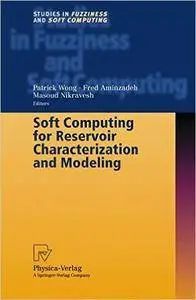Patrick Wong, Fred Aminzadeh, Masoud Nikravesh, "Soft Computing for Reservoir Characterization and Modeling"
2002 | pages: 582 | ISBN: 379082495X | PDF | 26,7 mb
2002 | pages: 582 | ISBN: 379082495X | PDF | 26,7 mb
In the middle of the 20th century, Genrich Altshuller, a Russian engineer, analysed hundreds of thousands of patents and scientific publications. From this analysis, he developed TRIZ (G. Altshuller, "40 Principles: TRIZ Keys to Technical Innovation. TRIZ Tools," Volume 1, First Edition, Technical Innovation Center, Inc. , Worcester, MA, January 1998; Y. Salamatov, "TRIZ: The Right Solution at the Right Time. A Guide to Innovative Problem Solving. " Insytec B. V. , 1999), the theory of inventive problem solving, together with a series of practical tools for helping engineers solving technical problems. Among these tools and theories, the substance-field theory gives a structured way of representing problems, the patterns of evolution show the lifecycle of technical systems, the contradiction matrix tells you how to resolve technical contradictions, using the forty principles that describe common ways of improving technical systems. For example, if you want to increase the strength of a device, without adding too much extra weight to it, the contradiction matrix tells you that you can use "Principle 1: Segmentation," or "Principle 8: Counterweight," or "Principle 15: Dynamicity," or "Principle 40: Composite Materials. " I really like two particular ones: "Principle 1: Segmentation," and Principle 15: Dynamicity. " "Segmentation" shows how systems evolve from an initial monolithic form into a set of independent parts, then eventually increasing the number of parts until each part becomes small enough that it cannot be identified anymore.
My Links



